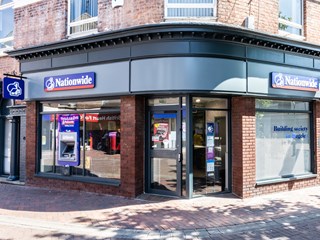
At a glance
Building societies are financial organisations that are similar to banks in many ways. They both offer a range of financial products and services, including savings accounts and mortgages, but there are some key differences between the two.
A building society, sometimes known as a “mutual” is owned and run by its members. Anyone who has a savings account, mortgage or other qualifying product with a building society automatically becomes a member.
Building societies have their origins in the late 18th century as local, mutual organisations that aimed to help their members achieve home ownership. Members paid money into a pool of funds held by the organisation, which would enable each of them in turn to afford their own home.
While these organisations have inevitably changed over time, building societies continue to be run for the benefit of their members, instead of external shareholders, which means any profits are reinvested back into the society.
They focus primarily on offering savings accounts and mortgages, although some societies now offer current accounts and other products too.
At the time of writing, there are 42 building societies in the UK with around 26 million members, according to the Building Societies Association (BSA).
One of the key differences between banks and building societies is the way they are run.
Banks are run for profit and for the benefit of their shareholders. By contrast, building societies are run for the benefit of their members, which is anyone who has a qualifying account with the society, and any profits are put back into the building society or distributed to its members.
Members can also have a say in how the building society is run and vote at its Annual General Meeting (AGM), for example.
Under the Building Societies Act 1986, building societies have to raise at least 50% of their funds from money their members have deposited, which means they may be more likely to offer attractive savings rates to encourage more people to save with them. Banks don’t have this restriction and can raise funds from a range of sources.
Many building societies also have strong connections with their local or regional community, whereas banks typically operate on a more national or global scale. For example, building societies may only have branches in certain parts of the country and may only offer products to people living in certain postcodes. Some building societies also support projects to help the local community.
However, despite their community focus, several building societies have branches and accept applications from people across the UK.
And, thanks to online services, it’s easier for people to become a member of a building society regardless of where they live.
Another major difference between building societies and banks is that banks typically offer a wider range of financial products. Building societies usually focus on savings and mortgages (although some now offer additional products), whereas many banks also offer current accounts, credit cards, personal loans and more.
Like banks, building societies are regulated by the Financial Conduct Authority (FCA) and the Prudential Regulatory Authority (PRA). This means both types of organisation are held to the same standards and follow the same rules to ensure their customers are treated fairly and their money is safe.
Any savings you have with a bank or building society are protected by the Financial Services Compensation Scheme (FSCS). Under this scheme, up to £85,000 you have saved with each individual bank and building society is protected should they go bust.
However, bear in mind that some of these organisations are simply different brands that operate under the same banking licence, which means the £85,000 limit would apply to the total deposits you have saved across these providers, not each individual one.
While some building societies only offer particular products to those living in certain areas or those who meet specific eligibility criteria, many building societies offer products that are available to all UK residents.
This means that, regardless of where you live, you may be able to open a savings account online or apply for a mortgage with a building society, even if there isn’t a branch nearby.
However, it’s worth noting that some building society products are only available by visiting a branch, which could rule them out as a viable option for you.
Always check the eligibility criteria for a product from a building society, as well as the methods of opening and managing it, before applying.
As well as products for adults, many building societies also offer children’s savings accounts and Junior ISAs.
A building society roll number, or reference number, is a code made up of letters and numbers that is unique to your account. You will often get an account number and sort code as well. You need the roll number to make a payment into a building society account.
As of May 2024, there are 42 building societies in the UK, according to the Building Societies Association.
Some building societies operate under the same licence, which is significant for your Financial Services Compensation Scheme (FSCS) protection as the £85,000 limit applies for deposits across both institutions.
At the time of writing, the following building societies are linked and share their FSCS protection:
You can check if a building society shares a licence on its website or by searching the FCA register.
Disclaimer: This information is intended solely to provide guidance and is not financial advice. Moneyfacts will not be liable for any loss arising from your use or reliance on this information. If you are in any doubt, Moneyfacts recommends you obtain independent financial advice.